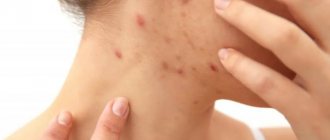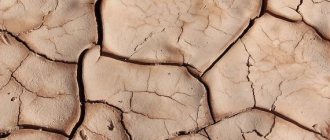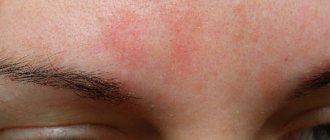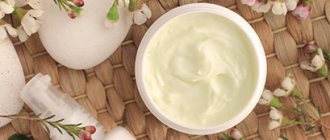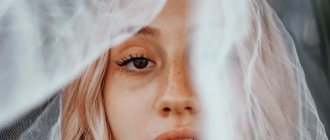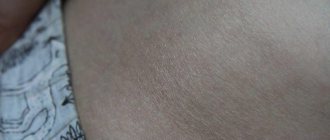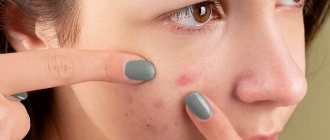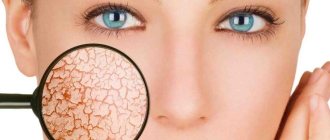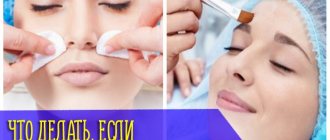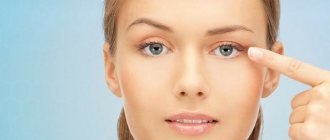Today we will try to answer the question: “After peeling, there are red spots on the face, what should I do?”, which clients often ask cosmetologists.
As you know, peeling is a procedure for cleaning the face, neck, hands and décolleté. This cleansing occurs in the following way: the keratinized layer of dead cells is removed from the skin and toning, cleansing and natural rejuvenation occurs. Most often, this procedure is painless and causes virtually no side effects. But it is enough not to follow just one recommendation or rule, and negative consequences or side effects can practically not be avoided. Not in all cases, after the appearance of such side effects or undesirable consequences, you should contact a specialist. But it should be remembered that with further complications, it is necessary to undergo examination by a dermatologist.
Cause of red spots and itching
Red spots after peeling can be called normal, because the chemicals and substances used cause just such a reaction. Often, redness appears immediately after the facial cleansing procedure, and disappears after approximately 3 hours from the moment of cessation. But there are times when the redness goes away only after a few days. The duration and intensity of facial redness depends on the individual characteristics of the skin, highly sensitive skin and the concentration of the product used for peeling.
Itching on the face appears on the 2nd or 3rd day and lasts from 2 to 5 days. If it is irritating and difficult to tolerate, you can apply a cold compress to your face or take an antihistamine. Next, you will need to keep your skin moisturized and take anti-allergy medications to relieve itching.
Severe redness after deep peeling, including glycolic peeling. This skin reaction is caused by dilation of blood vessels located close to the surface of the skin, called persistent erythema.
Why does Quincke's edema occur?
Urticaria with angioedema appears after allergens enter the body, causing degranulation of mast cells. Physical factors (cold, heat, solar radiation, insect bites), as well as chemical compounds in small doses dissolved in ordinary water, can also provoke an allergic reaction to urticaria. Much more often, hives are triggered by food allergens and ingredients of popular medications.
Quincke's edema is essentially a complication of urticaria, when the pathological process covers not only the upper layers of the skin, but penetrates deeper and involves the mucous membranes, subcutaneous fatty tissue and muscles. Less commonly, Quincke's edema develops as an independent disease.
In more than 25% of patients with urticaria, the leading role in its development and angioedema is played by a hereditary factor; in another third, such phenomena are acquired during life.
With any clinical type of urticaria, the permeability of small blood vessels increases significantly. The surrounding tissues quickly swell, and under the influence of excess histamine, large blisters form on the surface of the skin. The allergic reaction gradually affects the deep layers of the skin and subcutaneous tissue - this is how angioedema begins.
Cosmetologists will tell you how to avoid spots on your face
The procedure has unpleasant accompanying aspects, which include redness, itching, peeling and increased sensitivity of the epidermis. But they are short-lived and disappear within 2 hours. Sometimes they finally go away after about 4 days, but these side effects should not cause much discomfort if the procedure is performed correctly.
If peeling was carried out at home or proper facial care was not followed after a professional procedure, then more severe complications cannot be avoided. There are rare cases when serious complications arise due to the inexperience of the cosmetologist performing the procedure in the salon.
In order to reduce the likelihood of complications, you need to follow some advice given by cosmetologists:
- first of all, when going to a specific beauty salon, you need to find out as much as possible about this establishment, read reviews on the Internet, ask your friends. This is important in order to eliminate the risk of falling into the hands of an unqualified cosmetologist;
- You should not carry out the chemical peeling procedure yourself for the first time. It’s better to go to a salon, where a specialist will answer your questions, explain important points and tell you how to correctly carry out this procedure step by step. Also in the salon you will feel the results for yourself;
- you need to find out if there are any allergies to the substances used;
- It is necessary to study in detail all contraindications to the procedure. It is worth noting that girls who are planning a pregnancy in the near future or are already pregnant. And also during lactation, you cannot use yellow, also known as retinoic, peeling. And those who have very sensitive skin should avoid dairy products;
- The first days after, the skin does not look very attractive, and you should not stay in the sun for too long. During the course, as well as a few days after, it is recommended to be outside as little as possible, so we advise you to take a few extra days off from work.
Hives. Symptoms
The key signs of hives are a profuse red rash and accompanying itching.
The rash appears as bright inflammations of a round or oblong shape (in the form of straight lines). At first the skin turns red. Blisters then form.
The latter can unite in groups, forming large reddish areas. In rare cases, blisters transform into vesicular formations.
The rash can occur in any area of the body. And with each attack they appear in different areas: on the shoulders, face, palms, etc.
In addition to rashes, the patient may suffer from:
- headache;
- feeling of nausea;
- lethargy and weakness;
- drowsiness;
- temperature increase (no more than 38 degrees).
The causes of urticaria on the face can be very diverse:
- An allergic reaction to a food product. Most often, people are allergic to oranges and lemons, strawberries, honey and honey-based products, chocolate, etc.
- Allergy to a cosmetic product or medication. If the product contains many chemical components, herbal extracts, honey, thin facial skin may break out in hives.
- Allergy to insect bites: mosquito, bee, wasp, hornet. An allergic reaction is provoked by saliva, which the insect injects into the victim’s body when it bites.
- The reaction of the skin to exposure to cold or sun. Similar responses of the body to low or high air temperatures are typical for people with low immunity. The rash is accompanied by increased body temperature, fever, and headache.
- It is extremely rare that urticaria on the skin of the face is a sign of dysfunction of one or more internal organs of a person. Often, this clinical picture is observed in cases of problems with the endocrine system, hormonal imbalances, and disorders of the nervous system.
We suggest you read What to do if a teenager drinks: causes and prevention Urticaria differs from other diseases in its characteristic symptoms:
- the skin of the face becomes covered with blisters of various sizes with clearly defined edges;
- severe headache, insomnia, nervousness, irritability, general malaise, and a feeling of weakness appear;
- the human body temperature rises;
- the skin of the face is very itchy.
Sometimes the rash appears the day after the trigger, sometimes a week passes before an allergic reaction occurs. The most unpleasant thing is the severe itching caused by red spots on the skin. In the mild phase, if there is no constant factor, the urticaria goes away.
During an exacerbation, the skin becomes dry, covered with a crust, which begins to bleed from constant scratching. Droplets of ichor are visible on its surface. The itching worsens at night. The patient's temperature rises, he cannot sleep normally, he feels hot and uncomfortable. The constant itching is exhausting and there is no escape from it. The acute period lasts several weeks.
Urticaria (urticaria) in an advanced stage is manifested by the following symptoms:
- A person wakes up in the morning and sees swelling on the face and body.
- During the day, the skin becomes covered with tubercles and blisters, which turn red in the evening.
- During the night, the blisters swell so much that they completely merge, forming a crust.
- The body is very itchy, the patient cannot sleep normally, often wakes up and scratches the rash.
In severe cases, a person’s lips swell as if they were injected with silicone. Symptoms of a sore throat appear: the neck swells, it hurts to swallow, the voice deepens. If the mucous membranes of the digestive organs swell, diarrhea, bloating, and vomiting occur.
|
|
Quincke's edema is very dangerous. He appears quite quickly and unexpectedly. It develops very rapidly, which is why in literally 10-15 minutes a person becomes unrecognizable. Another danger is that the swelling can change its location to internal organs such as the tongue, palate, throat, larynx. Increasing in size, they prevent air from entering the lungs and lead to asphyxia.
What do temporary side effects look like?
Almost all girls and women who used chemical peeling on themselves noticed that after this their face itched, peeling and irritation appeared.
After peeling, the face looks inflamed for the first couple of hours, but the redness will go away if you follow the cosmetologist’s advice on skin care after such a procedure.
After the procedure, you may feel as if the skin is tightening; this can be combated with a high-quality nourishing cream.
Mild burning and irritation on the skin is also a temporary problem after the procedure. This occurs due to the use of acid during the procedure.
Sometimes, this happens quite rarely, a chemical burn appears.
Who is to blame for complications after peeling?
Any operation is a very responsible matter. It is simply unacceptable for an amateur to undertake such work. But errors can occur not only on the part of the doctor. Patients often do not follow the instructions that they are required to read. For example, with some complications it is prohibited to drink alcohol. But some patients think that nothing will happen with one glass of cognac or a can of beer. Then in the morning, after one serving, problems begin. And the money spent on the operation simply goes down the drain.
While some types of procedures can be performed by a novice, other types of surgery should only be performed by an experienced cosmetologist. For example, calculate the acid concentration that is harmless to the skin.
What side effects are not normal after procedures?
Hyperemia occurs in women with very sensitive skin who have undergone the procedure, and also appears after a high concentration of drugs used during chemical peeling. But this is not the classic redness that occurs during the procedure.
Red spots and a flushed face are the result of chemical peeling. But if they do not go away within several days, you should consult a doctor - a dermatologist or cosmetologist.
Due to the use of acid in the procedure, the skin can be severely injured and a chemical burn occurs. This phenomenon is quite rare, one might even say unique, but it can still happen. In this case, the dermatologist will prescribe special medications to eliminate the consequences of the burn.
When conducting a preliminary examination of the skin, which is a mandatory step before prescribing chemical peeling of the face, all possible contraindications to the procedure should be identified. If herpes on the face has not been diagnosed, but it is present, scars and scars may appear on the surface of the face after peeling, which cannot always be eliminated without leaving a trace.
Symptoms of allergic urticaria
- A skin rash that quickly appears after contact with an allergen consists of individual flat blisters of pale pink or red color.
- The size of the blisters ranges from a few millimeters to several centimeters, making them similar to a nettle burn or ordinary burns; their number is also variable - from a few to many small blisters.
- A distinctive feature of allergic urticaria is that the blisters have clear boundaries, and when you press on such a blister, it takes on the color of healthy skin and disappears, only to appear again after the pressure is removed.
- The rash is accompanied by characteristic severe itching.
- Sometimes the blisters merge with each other, forming plaques.
- Depending on the strength of the reaction, in addition to skin rashes, vomiting and nausea may occur, especially if the allergy affects the mucous membranes of the esophagus.
Recommendations from cosmetologists
Before you begin, you need to carefully study all possible options for cleansing the skin, identify contraindications, study side effects and how to get rid of them, and figure out what type of skin you have. You need to consult with a dermatologist about the need for the procedure and find out from the cosmetologist which option, in his opinion, is most suitable for you.
A slightly red face after peeling is not so scary, it is a natural reaction to a procedure using a chemical substance. A cosmetologist will help you remove redness and will tell you exactly what needs to be done, what precautions you should take, and what facial products to use. If you have any questions, you will definitely be consulted, and if complications arise, you can be examined by a dermatologist.
After peeling, it is prohibited to do certain procedures that can seriously injure the skin and cause irreparable damage:
- you need to avoid tanning in the sun and in the solarium for the period established by the cosmetologist; even being on the street for a long time is also undesirable;
- you cannot steam your face (steam bath) or make scrubs;
- You should avoid visiting a public swimming pool, any other bodies of water, as well as saunas and steam baths;
- do not abuse physical activity and other activities that stimulate sweat production and increase blood flow to the face;
- do not be in the wind;
- touching your face should be kept to a minimum;
- do not use decorative cosmetics until the skin is completely restored;
- avoid using facial skin care products; the cosmetologist will prescribe you the most suitable medications that will help restore the epidermis and eliminate side effects;
During the recovery period after peeling, you need to choose skin care products that have a moisturizing effect.
It is important to use sunscreens with the maximum degree of skin protection from exposure to ultraviolet rays when going outside; these products should be used even in cloudy weather.
What to do in case of burns?
A burn after a chemical (glycolic or salicylic) peel is a reaction of the human body to protect itself from the strong effects of the substances used. If the procedure is performed correctly, only mild burns occur, which are characterized by slight redness and hardening of the dermis.
With more severe burns, the face is red, the skin may become blistered and cracked, and may also turn brown, which then turns yellow. How should burns be treated after facial cleansing?
- Apply a restorative ointment containing panthenol to the skin to quickly heal the wound and renew skin cells.
- Use anti-inflammatory drugs, such as antiseptic gels and ointments.
- Avoid using scrubs, drying cleansers, and soaps with high sulfate content.
- In some cases, doctors may prescribe antibiotics to prevent dermatological infections.
- When exposed to the sun for a long time, apply a sunscreen with an increased ultraviolet filter to your skin.
- Avoid sudden changes in temperature.
- Do not contact with water that contains chlorine and large amounts of salt.
Under no circumstances should you peel off post-burn crusts or rub your face too hard with a towel, otherwise the wounds will take even longer to heal. In addition, drink more clean water. This will stimulate the skin restoration process.
Strontium nitrate as an inhibitor of neurogenic inflammation.
Studies of the effect of strontium salts on skin irritation caused by various chemical agents were conducted at the University of California (San Diego, USA)22. Strontium chloride and nitrate have been used as irritant blockers. The chemical irritants used were 7.5% lactic acid, 70% glycolic acid, 4% calcium triglycolate (a component of depilatory cream) and aluminum salts. Skin irritation, which manifested itself mainly in the form of a sensory reaction, was assessed according to the subjective feelings of the subjects on a 4-point scale: 0 - no irritation; 1 - quickly passing, barely noticeable sensation of skin irritation; 2 - a certain feeling of irritation that worries the subjects; 3 - very unpleasant sensations; 4 - intense sensations that are difficult to endure.
When 7.5% lactic acid (pH 1.9) was applied to the skin, skin irritation reached medium values (1-1.5) 1 minute after application and a maximum value (2-3) over the next 3-7 minutes. When a mixture of 7.5% lactic acid and strontium nitrate (concentration 500 mM) was applied to the skin, skin irritation decreased by an average of 67% (calculation was based on a comparison of the areas under the experimental curves).
Skin irritation caused by an alkaline depilatory cream (pH 12) based on calcium triglycolate was also significantly inhibited by strontium nitrate. The experiment involved 23 people who applied the cream to 506 areas of skin. The results of comparing the degree of skin irritation in these areas in the control and experimental groups are given in Table. 1.
| Table 1. Studies of the irritant effect of depilatory cream (CD) | ||
| Skin irritation | KD | KD + strontium nitrate |
| Strong (4) | 0 | 0 |
| Average (3) | 7 | 2 |
| Weak (2) | 45 | 11 |
| Slightly noticeable (1) | 88 | 53 |
| Missing (0) | 113 | 187 |
After applying 70% non-neutralized glycolic acid (pH <1) to the skin of the forearm of 11 people (121 areas), burning, tingling and itching were observed in all cases, which reached a maximum 3 minutes after application (3.5 points). The addition of strontium nitrate to 70% glycolic acid made it possible to significantly (81%) reduce the intensity of skin irritation. Comparative results are presented in table. 2.
| Table 2. Irritant effect of 70% glycolic acid (GA) | ||
| Skin irritation | 70%HA | 70% HA + strontium nitrate |
| Strong (4) | 30 | 0 |
| Average (3) | 39 | 8 |
| Weak (2) | 37 | 5 |
| Slightly noticeable (1) | 6 | 27 |
| Missing (0) | 9 | 81 |
Unlike lidocaine and novocaine, strontium salts reduced the degree of skin irritation without affecting tactile and pain sensitivity, which is an important point when carrying out deep peeling. Studies have shown that 20% strontium nitrate applied to the skin does not change its sensitivity to cold, heat, pain.23 The effect of strontium nitrate on C-receptors is also confirmed by the fact that itching caused by histamine (a direct stimulator of C-receptors), with strontium nitrate is significantly suppressed.24
Is strontium safe?
Every time a new ingredient appears, a natural question arises: will it act for the benefit of our skin or only for the benefit of those who produce and sell cosmetics. On the one hand, strontium is found in sea water, algae, spinach and some other plants, on the other hand, it is obvious that it can actively interfere with cell physiology, affecting calcium metabolism. For now, only one thing can be said - European legislation has approved strontium nitrate and recognized it as safe. There is no data in the literature on the negative effects of strontium on cells if it is not radioactive. We can probably conclude that the introduction of strontium into deep peeling products, which are on the skin for no more than 10-15 minutes and are used quite rarely, is quite acceptable. By blocking the release of neurotransmitters from free nerve endings, and perhaps directly inhibiting the production of inflammatory cytokines in skin cells, strontium nitrate may significantly reduce skin damage during chemical peels. A separate study requires the question of whether it is possible (and whether it is necessary) to introduce strontium salts into cosmetics that are on the skin for a long time or are used regularly, as well as in medicinal cosmetics that may end up on damaged skin.*
*In humans and animals, strontium accumulates in bone tissue and affects the process of bone formation. Excess strontium causes brittle bones (“strontium rickets”). — Approx. ed.
Conclusion
Glycolic acid peeling is the most common means of eliminating the symptoms of skin photoaging. Changes such as solar keratosis, elastosis, age spots require the use of fairly high concentrations of glycolic acid (up to 70%). In order to reduce skin irritation, partially neutralized glycolic acid (pH 3.5-4) is used. It has been experimentally shown that the effectiveness of peeling depends not only on the concentration, but also on the acidity (pH) of the formulation - the lower the pH, the better the final result. When the pH decreases, the clients' tolerance to the procedure deteriorates significantly. To reduce skin irritation during peeling, various additives are used: cola extract, green tea, grape seed extract, and pre-peel preparation of the skin is also carried out. A new promising means of inhibiting skin irritation during chemical peeling is strontium nitrate. Nowadays, strontium nitrate has already been approved for use in the cosmetics industry, and now the Western media is talking about “breaking the irritation barrier.”25 Well, let’s hope that chemical peeling without skin irritation is actually will be a new step in the fight against premature aging.
Bibliography
- Gilchrest BA. “A review of skin aging and its medical therapy.” Br J Dermatol 1996; 135(6): 867-875.
- Slavin JW. "Considerations in alpha hydroxy acid peels." Clin Plast Surg 1998; 25(1): 45-52.
- Draelos ZD "Sensitive skin: perceptions, evaluation, and treatment." Am J Contact Dermat 1997; 8(2): 67-78.
- Draelos ZD. “Treating the patient with multiple cosmetic product allergies. A problem-oriented approach to sensitive skin.” Postgrad Med 2000; 107(7): 70-72, 75-77.
- Basketter DA, Griffiths HA. "A study of the relationship between susceptibility to skin stinging and skin irritation." Contact Dermatitis 1993; 29(4): 185-188.
- Coverly J, Peters L, Whittle E, Basketter DA. “Susceptibility to skin stinging, non-immunologic contact urticaria and acute skin irritation; Is there a relationship?" Contact Dermatitis 1998; 38(2): 90-95.
- Lammintausta K, Maibach HI, Wilson D. “Mechanisms of subjective (sensory) irritation. Propensity to non-immunologic contact urticaria and objective irritation in stingers.” Derm Beruf Umwelt 1988; 36(2): 45-49.
- Simion FA, Rhein LD, Morrison BM Jr, Scala DD, Salko DM, Kligman AM, Grove GL. "Self-perceived sensory responses to soap and synthetic detergent bars correlate with clinical signs of irritation." J Am Acad Dermatol 1995; 32(2 Pt 1): 205-211.
- "Current Dermatology" ed. Adeskevich V.P. M: Medical book, N. Novgorod: publishing house NGMA, 2000. - 306 p.
- Sann H, Pierau FK. "Efferent functions of C-fiber nociceptors." Z Rheumatol 1998; 57(Suppl 2): 8-13.
- Ansel JC, Armstrong CA, Song I, Quinlan KL, Olerud JE, Caughman SW, Bunnett NW. "Interactions of the skin and nervous system." J Investig Dermatol Symp Proc 1997; 2(1): 23-26.
- Misery L “Skin, immunity and the nervous system.” Br J Dermatol 1997; 137(6): 843-850.
- Smith W.P. "Hydroxy acids and skin aging" Cosmetics & Toiletries 1994; 41: 41-48.
- Becker FF, Langford FP, Rubin MG, Speelman P. "A histological comparison of 50% and 70% glycolic acid peels using solutions with various pHs." Dermatol Surg 1996; 22(5): 463-465.
- Minkoff S, Axelrod S. “Efficacy of strontium chloride in dental hypersensitivity.” J Periodontol 1987; 58(7): 470-474.
- Addy M, Dowell P “Dentine hypersensitivity - a review. Clinical and in vitro evaluation of treatment agents.” J Clin Periodontol 1983; 10(4): 351-363.
- Boivin G, Deloffre P, Perrat B, Panczer G, Boudeulle M, Mauras Y, Allain P, Tsouderos Y, Meunier PJ. "Strontium distribution and interactions with bone mineral in monkey iliacal bone after strontium salt (S 12911) administration." Bone Miner Res 1996; 11(9): 1302-1311.
- Zhai H, Hannon W, Hahn GS, Pelosi A, Harper RA, Maibach HI. "Strontium nitrate suppresses chemically-induced sensory irritation in humans." Contact Dermatitis 2000; 42(2): 98-100.
- Silinsky EM Mellow AM. “The relationship between strontium and other divalent cation in the process of transmitter release from cholinergic nerve endings” In: Skoryna SC, ed. Handbook of Stable Strontium. New York:Plenum, 1981:263-285.
- Celerier P, Richard A, Litoux P, Dreno B. "Modulatory effects of selenium and strontium salts on keratinocyte-derived inflammatory cytokines." Arch Dermatol Res 1995; 287(7): 680-682.
- Peachell PT, Pearce FL. "Divalent cation dependence of the inhibition by phenothiazines of mediator release from mast cells." Br J Pharmacol 1989; 97(2): 547-555.
- Hahn G.S. "Strontium is a potent and selective inhibitor of sensory irritation." Dermatol Surg 1999; 25(9): 689-694.
- Zhai H, Hannon W, Harper RA, Hahn GS, Alessandra P, Maibach HI. “Strontium nitrate decreased itch magnitude anf duration without effecting thermal pain or sensation in experimentally-induced pruritis in man” submitted 1998
- Zhai H, Hannon W, Hahn GS, Harper RA, Pelosi A, Maibach HI. "Strontium nitrate decreased histamine-induced itch magnitude and duration in man." Dermatology 2000; 200(3): 244-246.
